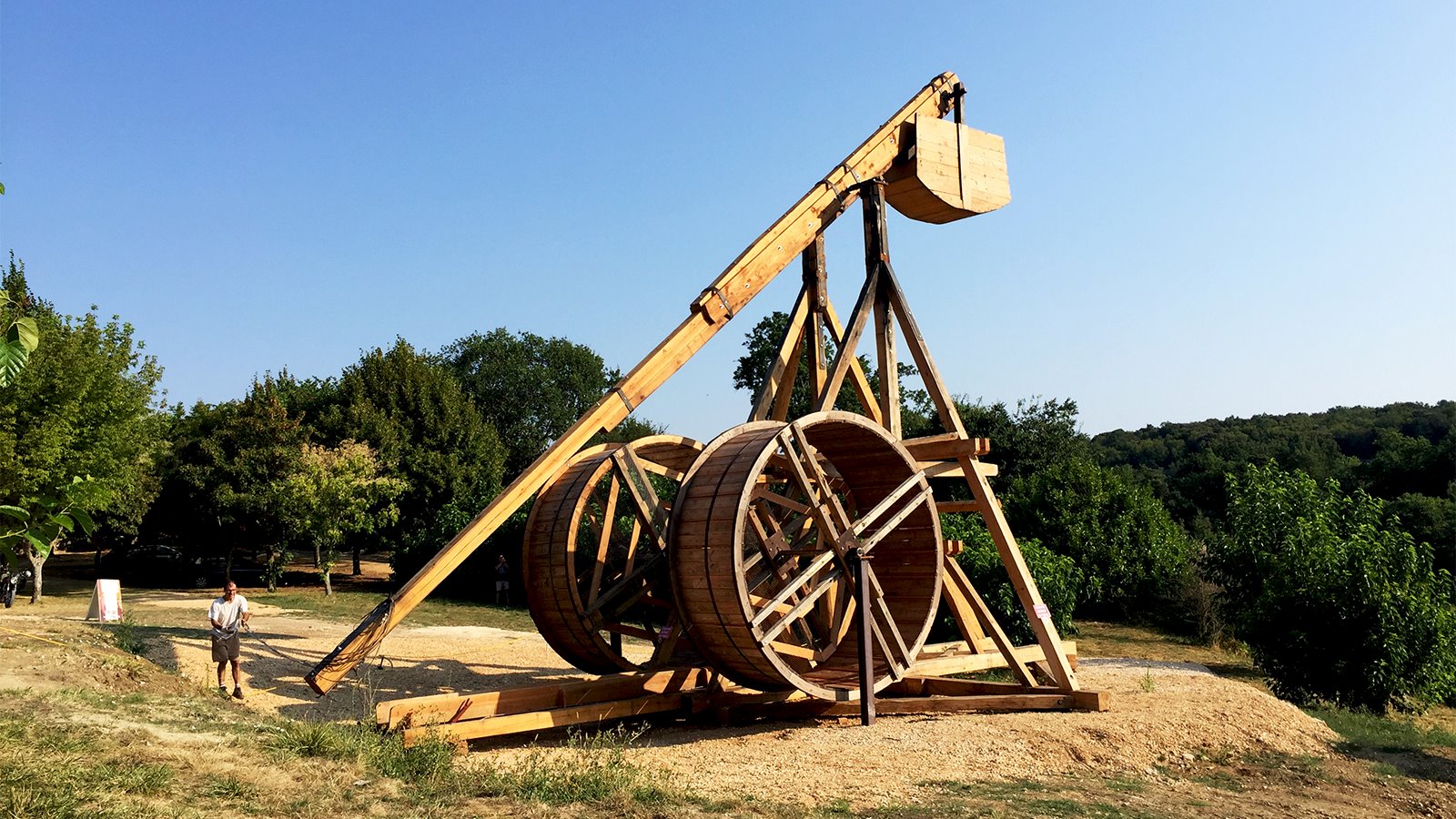
When it comes to ancient weapons, one fascinating device that comes to mind is the catapult. With its origins dating back to ancient times, catapults have played a significant role in warfare and siegecraft throughout history. These remarkable machines were capable of launching projectiles incredible distances, wreaking havoc on enemy fortresses and armies.
In this article, we will explore 18 intriguing facts about catapults that showcase their engineering marvels, historical significance, and enduring legacy. From their varied designs and ammunition to their impact on battles and technological advancements, catapults have left an indelible mark on the pages of history.
So, if you’re ready to dive into the world of ancient warfare and marvel at the ingenuity of these siege weapons, let’s catapult ourselves into the fascinating facts that await!
Key Takeaways:
- Catapults were ancient war machines used to launch projectiles like stones and fireballs. They played a crucial role in battles and inspired modern engineering.
- Catapults were not just for war; they were also used for entertainment and symbolized power and dominance on the battlefield. Today, they continue to fascinate history enthusiasts.
Catapults date back to ancient times.
The origins of catapults can be traced back to ancient Greece and Rome, where they were widely used in warfare.
Catapults were diverse in design.
There were several different types of catapults, including the trebuchet, onager, ballista, and mangonel, each with its own unique construction and purpose.
They were formidable siege weapons.
Catapults were primarily used to launch projectiles such as stones, arrows, and even flaming projectiles over long distances, making them powerful siege weapons.
The tension catapult was a popular design.
Tension catapults relied on the tension created by twisted ropes or sinews to propel the projectile forward with force.
The torsion catapult was another common type.
Torsion catapults used twisted bundles of rope or hair as a power source, which, when released, generated tremendous force.
Onagers were powerful stone-throwing catapults.
The onager, named after the wild ass known for its powerful kicks, was designed to launch large stones with incredible precision and power.
Catapults could launch more than just stones.
While stones were the most commonly launched projectiles, catapults were also used to hurl other items such as fireballs, dead animals, and even diseased corpses over castle walls during sieges.
They played a key role in ancient naval warfare.
Naval catapults, known as ship-shakers, were used to launch flaming projectiles at enemy ships, causing chaos and damage.
The Romans were skilled in catapult technology.
The Romans were known for their advanced siege techniques and developed sophisticated catapult designs that were used extensively in their military campaigns.
Catapults had both offensive and defensive functions.
While chiefly known for their offensive capabilities, catapults could also be used defensively to keep enemy forces at bay.
They influenced the outcome of battles.
During ancient warfare, successful use of catapults often played a decisive role in the outcome of battles and sieges.
Some catapults were mounted on wheels.
This allowed for greater mobility and flexibility in positioning the catapults on the battlefield.
Catapults were well-engineered machines.
They required meticulous craftsmanship and engineering skills to ensure their accuracy and reliability.
They were significant technological advancements.
Catapults represented a major advancement in military technology during ancient times, revolutionizing the way wars were fought.
Catapults inspired modern-day engineering.
Even today, the principles and mechanics behind catapults continue to influence the field of engineering, particularly in the development of mechanical launching systems.
Catapults were not limited to warfare.
Aside from their military use, catapults were also used for entertainment purposes, such as launching performers across the stage during Roman spectacles.
They symbolized power and dominance.
The presence of catapults on the battlefield served as a physical representation of a ruler’s military might and authority.
Catapults are still admired today.
While no longer used in warfare, catapults continue to captivate the imagination of history enthusiasts and are often featured in reenactments and museum displays.
These 18 fascinating facts about catapults demonstrate the ingenuity and impact of this ancient war machine. From their diverse designs to their significant role in warfare, catapults have left an indelible mark in history and continue to amaze us with their engineering brilliance.
Conclusion
Catapults have been used throughout history as powerful weapons of war. From ancient civilizations to medieval times, these formidable contraptions have played a significant role in military strategy. With their ability to launch projectiles over long distances, catapults have had a profound impact on the outcomes of battles and sieges.Today, catapults may not be as common on the battlefield, but they still hold a place of fascination and intrigue. Whether used for historical reenactments, educational purposes, or simply as a captivating piece of machinery, catapults continue to capture our imagination.Understanding the history, mechanics, and impact of catapults allows us to appreciate their importance in the development of warfare. From the intricate design and engineering necessary to build these machines, to the tactical advantage they provided on the battlefield, catapults are a testament to human ingenuity and the evolution of weaponry.
FAQs
1. What is a catapult?
A catapult is a type of weapon used to propel projectiles at high speeds. It typically consists of a sturdy frame, a launching mechanism, and a means to control the trajectory of the projectile.
2. How were catapults used in ancient times?
In ancient times, catapults were primarily used in warfare for siege warfare, to breach the walls of fortifications or to hurl projectiles over long distances into enemy territory.
3. What types of projectiles were launched by catapults?
Catapults were capable of launching various types of projectiles, including stones, flaming barrels, and even diseased animals or human body parts, aimed at spreading disease among enemy troops.
4. How were catapults operated?
Catapults were typically operated by a team of soldiers or trained individuals. They used a combination of manpower, mechanical mechanisms, and counterweights to launch the projectiles.
5. Do catapults still exist today?
While catapults are no longer used in modern warfare, they are still built and used for historical demonstrations, educational purposes, and as a form of entertainment.
Catapults have captivated imaginations for centuries, from Leonardo da Vinci's ingenious designs to their enduring symbolism of power. Fashion icons like Yves Saint Laurent also leave lasting legacies that inspire generations. For a glimpse into the extraordinary life of billionaire entrepreneur John Georges, read on and explore more remarkable facts.
Was this page helpful?
Our commitment to delivering trustworthy and engaging content is at the heart of what we do. Each fact on our site is contributed by real users like you, bringing a wealth of diverse insights and information. To ensure the highest standards of accuracy and reliability, our dedicated editors meticulously review each submission. This process guarantees that the facts we share are not only fascinating but also credible. Trust in our commitment to quality and authenticity as you explore and learn with us.


